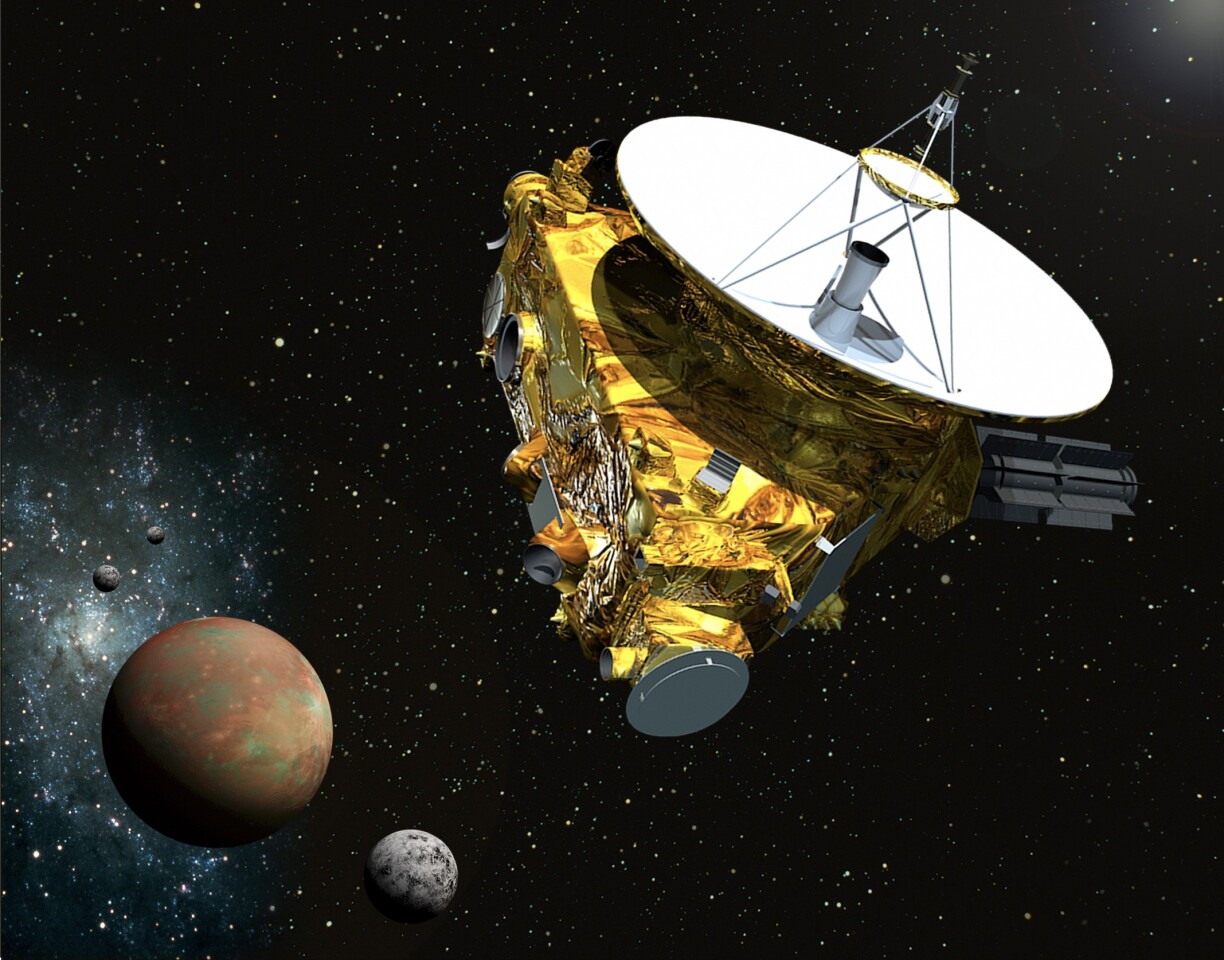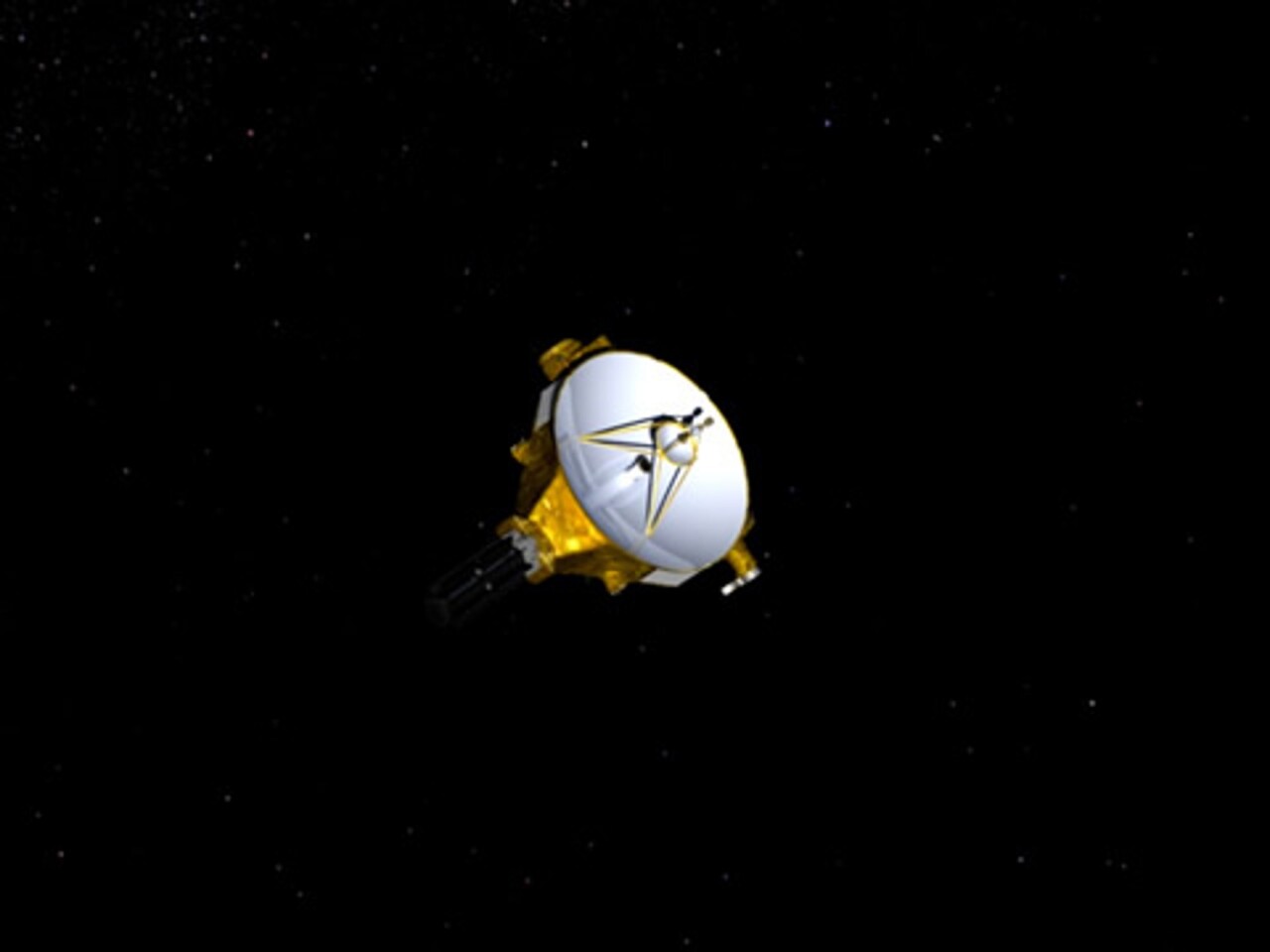In what must be history’s longest distance wake up call, NASA’s New Horizons spacecraft comes out of hibernation on December 6 at 3:00 pm EST. Now about 2.9 billion miles (4.6 billion km) from Earth, and 162 million miles (260 million km) from Pluto, the spacecraft will be put through a month-long preparation for its six month flyby of Pluto, with the primary phase of the mission slated to begin on January 15.
New Horizons' current state of hibernation means that most of the spacecraft’s systems are shut down except for monitors and a weekly beacon-status transmission. So far, the probe has gone through 18 hibernation phases since it launched in 2006. This works out to 1,873 days in hibernation or two-thirds of the Pluto flyby mission.
The hibernation technique, which NASA pioneered, is a way of conserving onboard resources, cutting down on mission control personnel time, reducing time on NASA’s Deep Space Network, and saving wear and tear on the spacecraft's electronics. New Horizons was reawoken periodically over the years to check the systems, rehearse the flyby, perform course corrections, and upload software updates. Last August, the probe was programmed to wake up on the scheduled December date. NASA says that 90 minutes after coming back online, New Horizons will transmit a confirmation back to Earth. However, this signal will not reach Earth for 4 hours and 25 minutes due to the enormous distances involved.

Once out of hibernation, mission control will put New Horizons through its final system checks and course corrections, download science data, and write and upload software updates. During the flyby, the probe will use its suite of seven scientific instruments to map Pluto, study its topology, temperatures, geology, and composition, as well as study the planet's moons and search for additional satellites.
One particular reason for the missions timing is that Pluto is currently in its late "summer" and scientists want to take the opportunity to study the planet’s atmosphere before it freezes again during its century-long winter. New Horizon’s instruments includes an advanced imaging infrared and ultraviolet spectrometers, compact multicolor camera, high-resolution telescopic camera, two particle spectrometers, space-dust detector, and two radio experiments.
The US$650 million New Horizons mission was launched January 19, 2006 atop an Atlas V rocket from Cape Canaveral, Florida. The unmanned 478 kg (1,054 lb) nuclear-powered spacecraft was sent on a 9.5-year mission to fly by Pluto and then on to study selected objects in the Kuiper Belt. Sent on a slingshot trajectory using the gravitational pull of Jupiter, New Horizons passed the orbit of Neptune on August 24 and will rendezvous with Pluto on July 14 of next year, which it will pass at a distance of 13,000 km (8,000 mi).

According to NASA, the mission was fast tracked due to the increasing knowledge about the Kuiper Belt. Since Pluto is the most accessible object originating from there, it seemed a logical way to gain direct information. In addition, it is the first mission sent to the only unvisited planet (if you're old school) in the Solar System.
NASA says that the flight team will be kept busy even after the flyby, because so much data will have been recorded that it won’t all be transmitted to Earth until October 2016.
"We've worked years to prepare for this moment," says Mark Holdridge, New Horizons encounter mission manager at the Johns Hopkins University Applied Physics Laboratory. "New Horizons might have spent most of its cruise time across nearly three billion miles of space sleeping, but our team has done anything but, conducting a flawless flight past Jupiter just a year after launch, putting the spacecraft through annual workouts, plotting out each step of the Pluto flyby and even practising the entire Pluto encounter on the spacecraft. We are ready to go."
Source: NASA








